The Colorful History of McLoughlin Bros.
by Maxine Carter-Lome
While you might not recognize the name McLoughlin Brothers, or the names of their books and games for that matter, chances are the colorful and dominant illustrations that defined their merchandise will look familiar, especially if you frequent antique shops and shows, and follow specialized toy, game, and publishing auctions. From the mid-19th until the early 20th century, McLoughlin Bros. was the foremost American publisher of children’s books, and a leading maker of children’s games and toys. Today, the games, books, and toys that enthralled generations of young children are back as collectibles, reminding us that objects of inspiration and imagination are timeless, and always valued.
John McLoughlin, Sr. was an unemployed Scottish coachmaker when he entered the New York publishing industry in March of 1819. While working for the Sterling Iron Company he met Robert Hoe, who manufactured printing presses. McLoughlin became interested in printing and began working for the New York Times in 1827. In 1828 he purchased a used printing press and type and set up his own business on Tryon Row in Manhattan. Here he wrote and published McLoughlin’s Books for Children, a collection of semi-religious tracts.
In 1840, John, Sr. formed a partnership with Robert H. Elton, a wood engraver, to publish toy books, comic almanacs, and valentines under the name Elton and Co. McLoughlin’s son, John McLoughlin, Jr., had been an apprentice at the firm of Robert H. Elton and when the senior partners for Elton and Company retired in 1850, John Jr. took over the firm. He changed the name to “John McLoughlin, Successor to Elton & Co.” McLoughlin eventually became known as the leading publisher of brightly hand-colored paper toy books as well as games, alphabet cards, and valentines. The company moved to Beekman Street after the original factory burned down. McLoughlin’s brother, Edmund, became a partner in 1855, and the company expanded.
Printing Innovators
Because John McLoughlin kept abreast of the technological improvements in printing, McLoughlin Bros. is credited with pioneering the systematic use of color printing technologies for children’s books. McLoughlin publications are particularly well known for their use of colored illustrations, which were hand-stenciled during the firm’s early years. John McLoughlin introduced a process whereby oil colors were applied directly to the photographic engravings—a revolutionary practice at that time—and in 1870 they opened the largest color printing factory in the United States in New York City to produce their books and publish/reprint others. By the 1880s, McLoughlin books were regularly featuring titles in folio formats, with illustrations printed using chromolithography.
Color printing allowed the Brothers to expand their business in other ways – for the printing of game box covers and game boards, cards, and toys, as the company expanded into new markets under Edmund’s stewardship. In 1885, Edmund McLoughlin retired from the company and later died in 1889. By 1886, the firm was producing a wide range of items, including toy books or chapbooks, large folio picture books and linen books, as well as puzzles, paper dolls, blocks, cards, and board games, including many of the earliest board games in America.
John McLoughlin, Jr. carried on the business with the assistance of his sons, Charles and James Gregory. He continued to produce a great variety of work including traditional stories, moralistic stories, religious stories, educational works, items with a strictly American theme, pop-ups, and games. When John McLoughlin, Jr. died in 1905, his sons, Charles and James Gregory, took over the company. In the McLoughlin Bros. 81st annual catalog, published in 1909, over 60 pages were dedicated to “Games,” reflecting the company’s successful diversification from children’s books to children’s toys and games.
By 1919, both McLoughlin’s sons had died or retired and H.F. Stewart was listed as president, with Gregory McLoughlin, son of James Gregory McLoughlin, as vice president. In 1920 the company was sold to Milton Bradley, their chief competitor. The Brooklyn factory was closed and the company was moved to Springfield, Massachusetts, and the McLoughlin division ceased with the onset of World War II.
The McLoughlin Illustrators
Many of the company’s early books were based on “pirate” editions of picture books issued in England by firms like George Routledge & Sons, which the Company was free to reprint since foreign books were not protected at that time by United States copyright. This also extended to the books’ illustrations, introducing Americans to such noted British illustrators as Kate Greenaway, Randolph Caldecott, and Walter Crane. The American Civil War, however, isolated America from foreign influence, and the McLoughlin Brothers were forced to build their own stable of artists and illustrators to meet the growing consumer demand for affordable and image-dominated children’s books.
According to the company’s history, seventy-five artists were employed at the firm’s Brooklyn factory from 1870 to about 1915 to illustrate hundreds of picture books. Some artists appear to have been retained as staff, while others worked freelance. These artists, selected for their varied and distinct talents, created richly colored watercolors as well as pen-and-ink drawings for hundreds of picture books and a wide variety of publications, from Mother Goose to books with patriotic themes, which were adapted to the printing processes for mass production.
Around the time of the American Civil War, McLoughlin Brothers began to print the names of a few illustrators on the covers of its books. Men like Justin H. Howard (1856–1890) and Thomas Nast (1840–1902) had already gained reputations for their visual contributions to both comic periodicals and the illustrated press and would have been known to a broad segment of American society. Promoting the names of artists like Nast, who was extremely well known in his lifetime, added caché to McLoughlin Bros. books for children. Eventually, many women illustrators would be employed by the firm as well, and several of these, including Sarah Noble Ives (1864–1944) and Ida Waugh (1846–1919), would be credited for their contributions. For collectors, McLoughlin Bros. books illustrated by known and noted artists are the most desirable finds.
The Stories Behind McLoughlin Books
McLoughlin Bros., like many book publishers of the day, copied hundreds of titles by others and reissued them under its own imprint, usually undercutting its competition in the process. Adaptations of Mother Goose Nursery Rhymes and children’s classics such as Robin Hood, Hansel & Grethel [sic], Snow White, Cinderella, and Puss In Boots, richly illustrated in beautiful color became catalog staples and wildly popular with a generation of young readers.
Many of the books McLoughlin published after the war can be characterized as “bowdlerizations” or retellings of well-known children’s stories. Bowdlerizations are considered to be less offensive versions of tales; however, not all McLoughlin’s published books ended happily ever after. In one instance, the book Ten Little N****ers, based on the poem written by Frank Green in 1869, was produced as a book for younger children by McLoughlin Brothers in 1872 – and included the music so the story could be sung, eventually turning the poem into a Minstrel song in the late 1800s. Although technically written to teach young children how to count backwards from ten, the story reveals an often violent demise as the number of children was lowered one at a time. The story was produced by many publishers up until 1956. Another example of such a book was the McLoughlin Bros. edition of a story called The Girl Who Inked Herself, the retelling of a story about a girl who continually spills ink on herself until she turns black, at which point her parents call her “too hideous for a daughter” and sell her to a rag shop as a “black doll.” The story ends with an image of Miss Mopsa hanging in the window of a rag shop. While these are the types of stories most commonly associated with McLoughlin Bros., the company also published religious, moralist, and other education texts.
The McLoughlin Bros. Archives
The McLoughlin Bros. catalog of products over a prolific five decades (1858-1920) is extensive, and spans a number of different collector categories, including illustrative art, toys, games, paper dolls, book publishing, picture books, and American children’s literature to name a few. While good examples of McLoughlin Bros. toys, books, and games can be affordably acquired online and at specialty auctions, it’s the company’s bigger story and historic contributions to these categories that interest historians and academics, and driving museums and universities to find new homes for its archival material among their collection, where the company’s story can be preserved and studied by future generations.
The American Antiquarian Society holds one of the major repositories of McLoughlin Bros. materials, including over 1,700 picture books, games, paper toys, publishers’ catalogs, company correspondence, and original artwork. This archival collection was originally given to Company Vice-President Charles Ernest Miller (1869-1951) when the firm, then a division of Milton Bradley, was in the process of being sold to toy manufacturer Julius Kushner. After his death, the collection was held by his daughter, Ruth Miller, who in 1968 sold her father’s collection to collector Herbert H. Hosmer. Mr. Hosmer donated this collection to the American Antiquarian Society in 1978.
The Cotsen Children’s Library at Princeton University holds one of the largest aggregations of McLoughlin Brothers’ catalogs, many from the firm’s own business office and publisher’s archive, uniquely annotated with information about new editions, changes in illustrations, or new series. In addition, Cotsen holds ten large scrap-book-style “guard-books” containing proof copies of illustrations for books, many extensively hand-annotated by McLoughlin Bros. editorial or production staff.
The de Grummond Children’s Literature Collection at The University of Southern Mississippi also holds a collection of McLoughlin Bros. papers, manuscripts, typescripts, galleys, correspondence, photographs, dummies, illustrations, color separations, proofs, and production material dating from 1854 to the early 1950s.
A catalogue of McLoughlin Bros. toys, books, games, paper dolls, blocks, and other novelty items published circa 1886 is now available online through the Hagley Museum (Wilmington, DE) digital archives at www.digital.hagley.org. The catalogue, a great resource for collectors and toy historians, lists each production item with a complete description, many with illustrative images.
Early McLoughlin Bros. games and puzzles can be purchased at auctions at relatively affordable prices, reflecting a continuing interest in these early examples of children’s games, puzzles, paintings and books.
Pook & Pook auctioned a number of McLoughlin Bros. games and puzzles at its December 7, 2018 auction with Noel Barrett. A Bulls And Bears Wall Street Game, patented 1883, with a vibrant lithograph box lid of a dressed bull and bear standing on Wall Street, a folding board with comic portrait vignettes of Gilded Age stock market characters Jay Gould, Cornelius Vanderbilt, and Horace Greely, including its original spinning board, play money, contracts, and instruction booklet, sold for $17,000 with active bidding. A McLoughlin Bros. Game of the Visit of Santa Claus, in the original box, and including a game board, a cardboard spinner, thirty-three cards, and a wooden game piece, sold for $2,000. Three McLoughlin Bros. paper lithograph toys, including a set of seven nesting alphabet blocks, a Pretty Village Church Set in the original box, and a Fire Engine Picture Puzzle in original box sold for $300, while other games, in varying condition, went for as little as $50.
Liveauctioneers shows a range of other auction houses making a market in early McLoughlin Bros. games and puzzles during 2018, including Bruneau & Co. Auctions, Copake Auction, PBA Galleries, Morphy Auctions, and Thomaston Place Auction Gallery. Prices range from $50 into the thousands, based on age, condition, game/object and graphics among other factors. But like all antique collectibles, the real value to be found in collecting McLoughlin Bros. books, toys, and games, is in the joy it brings to the collector.
The Art of the Game
Sources: americanantiquarian.org/mcloughlin-bros-catalogs-price-lists-and-order-forms; wikipedia.org/wiki/McLoughlin_Brothers; liveauctioneers.com/price-guide/mcloughlin-brothers; allaboutfunandgames.com; americanantiquarian.org/radiantwithcolor/exhibits/show/exhibits/illustrators


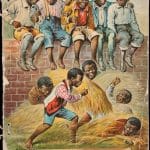
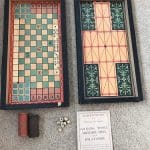
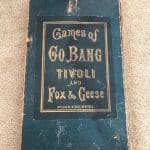
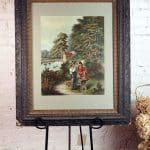


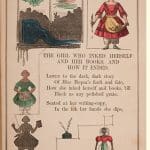
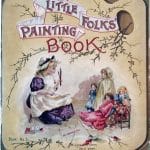
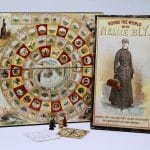
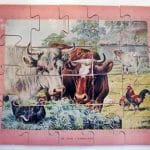
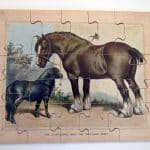




Related posts: